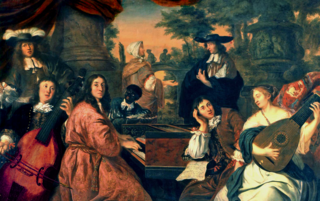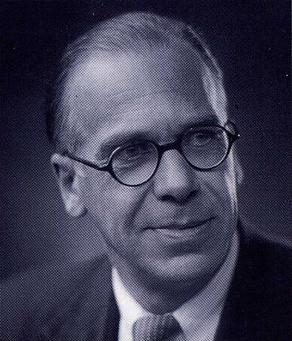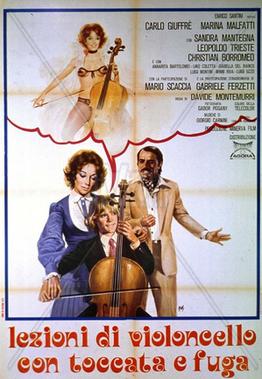This article needs additional citations for verification .(March 2019) |
| Toccata (film) | |
|---|---|
| Directed by | Herman van der Horst |
Release date | 1969 |
| Country | Netherlands |
| Language | Dutch |
Toccata (film) is a 1969 Dutch film directed by Herman van der Horst.
This article needs additional citations for verification .(March 2019) |
| Toccata (film) | |
|---|---|
| Directed by | Herman van der Horst |
Release date | 1969 |
| Country | Netherlands |
| Language | Dutch |
Toccata (film) is a 1969 Dutch film directed by Herman van der Horst.
Johann Pachelbel was a German composer, organist, and teacher who brought the south German organ schools to their peak. He composed a large body of sacred and secular music, and his contributions to the development of the chorale prelude and fugue have earned him a place among the most important composers of the middle Baroque era.

Charles-Marie-Jean-Albert Widor was a French organist, composer and teacher of the mid-Romantic era, most notable for his ten organ symphonies. His Toccata from the fifth organ symphony has become one of the best known and most often performed works for organ.

The Toccata and Fugue in D minor, BWV 565, is a piece of organ music written, according to its oldest extant sources, by Johann Sebastian Bach (1685–1750). The piece opens with a toccata section, followed by a fugue that ends in a coda. Scholars differ as to when it was composed. It could have been as early as c. 1704. Alternatively, a date as late as the 1750s has been suggested. To a large extent, the piece conforms to the characteristics deemed typical of the north German organ school of the Baroque era with divergent stylistic influences, such as south German characteristics.

Toccata is a virtuoso piece of music typically for a keyboard or plucked string instrument featuring fast-moving, lightly fingered or otherwise virtuosic passages or sections, with or without imitative or fugal interludes, generally emphasizing the dexterity of the performer's fingers. Less frequently, the name is applied to works for multiple instruments.

Girolamo Alessandro Frescobaldi was an Italian composer and virtuoso keyboard player. Born in the Duchy of Ferrara, he was one of the most important composers of keyboard music in the late Renaissance and early Baroque periods. A child prodigy, Frescobaldi studied under Luzzasco Luzzaschi in Ferrara, but was influenced by many composers, including Ascanio Mayone, Giovanni Maria Trabaci, and Claudio Merulo. Girolamo Frescobaldi was appointed organist of St. Peter's Basilica, a focal point of power for the Cappella Giulia, from 21 July 1608 until 1628 and again from 1634 until his death.

Johann Adam Reincken was a Dutch/German organist and composer. He was one of the most important composers of the 17th century, a friend of Dieterich Buxtehude and a major influence on Johann Sebastian Bach; however, very few of his works survive to this day.

Claudio Merulo was an Italian composer, publisher and organist of the late Renaissance period, most famous for his innovative keyboard music and his ensemble music composed in the Venetian polychoral style. He was born in Correggio and died in Parma. Born Claudio Merlotti, he Latinised his surname when he became famous in Venetian cultural clubs.

Le Tombeau de Couperin is a suite for solo piano by Maurice Ravel, composed between 1914 and 1917. The piece is in six movements, based on those of a traditional Baroque suite. Each movement is dedicated to the memory of a friend of the composer who had died fighting in World War I. Ravel also produced an orchestral version of the work in 1919, although this omitted two of the original movements.

William Alwyn, was an English composer, conductor, and music teacher.

Phaedra is a 1962 American-Greek drama film directed by Jules Dassin as a vehicle for his partner Melina Mercouri, after her worldwide hit Never on Sunday.
The Toccata and Fugue in D minor, BWV 538, is an organ piece by Johann Sebastian Bach. Like the better-known BWV 565, BWV 538 also bears the title Toccata and Fugue in D Minor, although it is often referred to by the nickname Dorian – a reference to the fact that the piece is written without a key signature – a notation that leads one to assume the Dorian mode.
The Toccata and Fugue in F major, BWV 540, is an organ work written by Johann Sebastian Bach, potentially dating from the composer's time in Weimar, or in Leipzig.

Toccata, Adagio, and Fugue in C major is an organ composition by Johann Sebastian Bach. As is the case with most other organ works by Bach, the autograph score does not survive. The earliest manuscript copies were probably made in 1719–1727. The title of the piece in these copies is given, as expected of organ literature of the time, simply as Toccata in C major. The piece is an early work, probably composed in the mid-to-late Weimar years, i.e. 1710–1717. It shares some similarities with other toccatas composed around the same time, such as BWV 538, BWV 540, and others: all show the influence of concerto style and form.

"A Toccata of Galuppi's" is a poem by Robert Browning, originally published in the 1855 collection Men and Women. The title refers to the fact that the speaker is either playing or listening to a toccata by the 18th-century Venetian composer Baldassare Galuppi. The poem consists of fifteen rhymed tercets; its prevailing meter is trochaic octameter catalectic.
Toccata for Toy Trains is a 1957 short film by Charles and Ray Eames, one of several films the husband-and-wife design team made during their career. It was inspired by the gift of a toy locomotive given by Academy Award-winning director Billy Wilder.
Firmin Swinnen (1885–1972) was a Belgian theater organist and concert artist who was noted for his organ improvisations during silent films in New York City.

Lezioni di violoncello con toccata e fuga is a 1976 commedia sexy all'italiana film. It stars actor Gabriele Ferzetti.
The Toccata in C major, Op. 7 by Robert Schumann, was completed in 1830 and revised in 1833. The piece is in sonata-allegro form.

The Toccata for Percussion Instruments (1942), was written by the twentieth-century Mexican composer Carlos Chávez. It is among his most popular compositions. The composition is written for six musicians playing a number of percussion instruments.

The Toccatas for Keyboard, BWV 910–916, are seven pieces for clavier written by Johann Sebastian Bach. Although the pieces were not originally organized into a collection by Bach himself, the pieces share many similarities, and are frequently grouped and performed together under a collective title.